VE Day: The end of World War II in Europe
Reference article: Facts about VE Day.
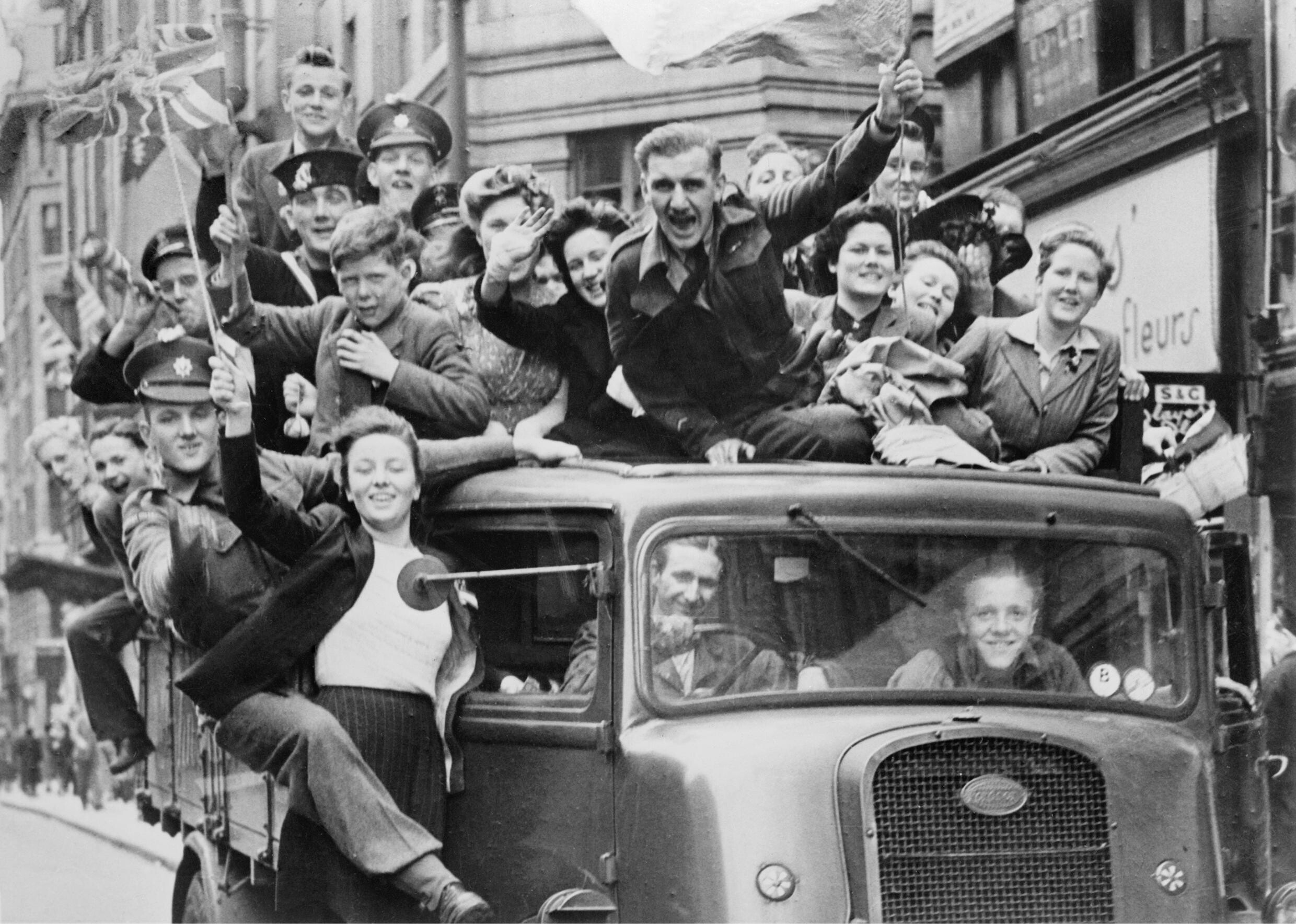
In the early hours of May 7, 1945, representatives from the Allied high command accepted the unconditional surrender of Nazi Germany, marking the end of World War II in Europe. The following day, nations around the continent and the world celebrated the victory and the beginning of hard-won peace after years of war and hardship.
Since then, Victory in Europe Day, or VE Day has been celebrated and commemorated each year on May 8, with 2020 marking the 75th anniversary of the end of hostilities in Europe.
What does VE Day stand for?
Victory in Europe Day was named to signify the end of combat operations in Germany, Scandinavia, Italy, Greece, the Balkan states and elsewhere on the continent during World War II. In the aftermath of Adolf Hitler's suicide on April 30, 1945, and the fall of Berlin on May 2, the end of the war was in sight. For this reason, celebrations to coincide with the expected imminent surrender of Nazi Germany had been planned for some time.
U.K. government cabinet minutes dated April 9, now held in the The National Archives of the country, refer to Prime Minister Winston Churchill's wish for the day of these festivities to be known as "VE Day."
Related: Bunker belonging to 'Churchill's secret army' re-discovered
However, the date does not mark the official end of World War II, as Imperial Japan did not surrender until Aug. 15, 1945. This date would become known as Victory over Japan Day (VJ Day) or Victory in the Pacific Day.
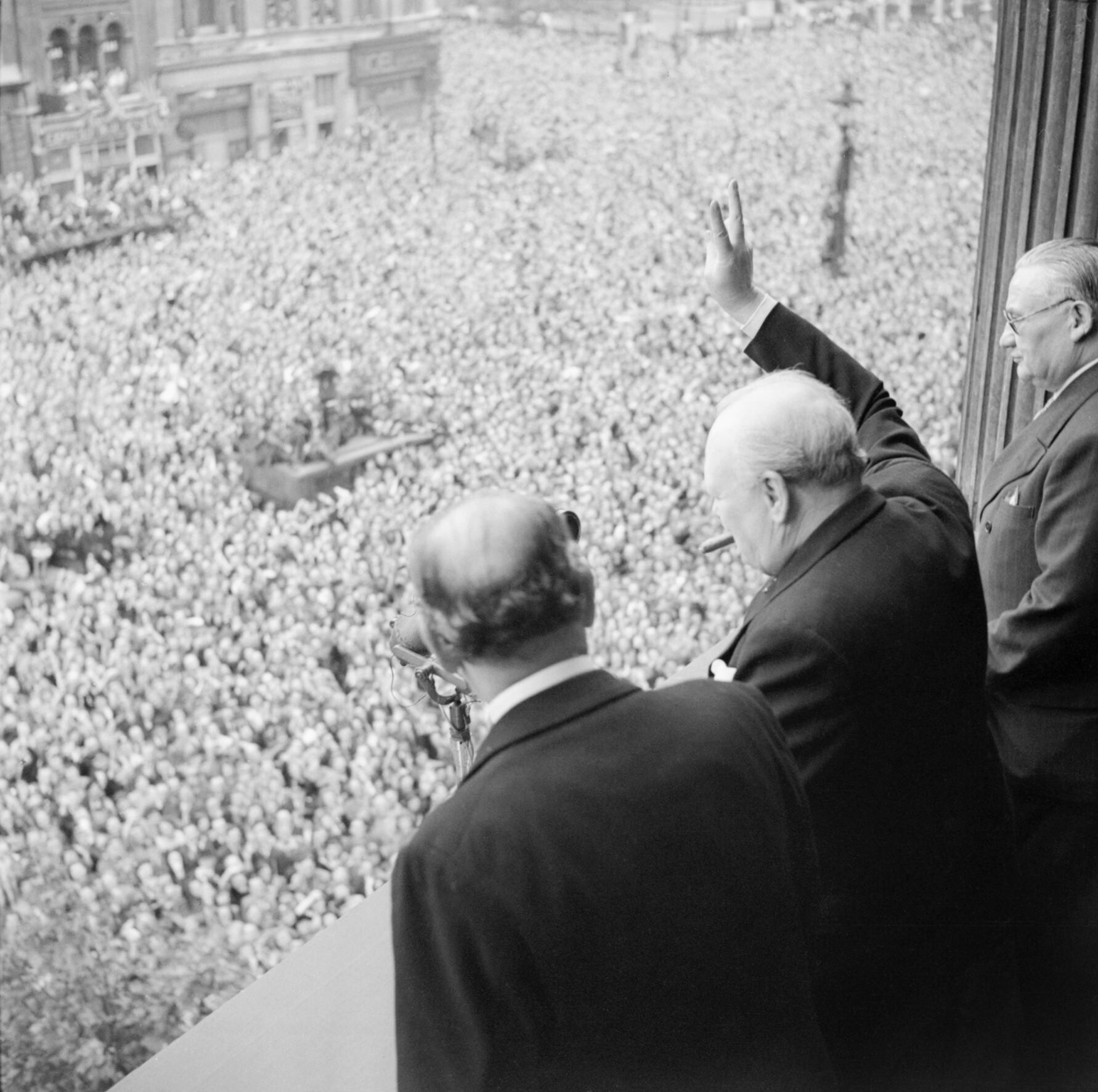
When was VE Day?
At 2:41 a.m. local time on May 7, 1945, the Supreme Headquarters of the Allied Expeditionary Force (S.H.A.E.F.), led by future U.S. President Dwight "Ike" Eisenhower, received the Nazi government's unconditional surrender in Reims, France. The second clause of the surrender document (now kept in The U.S. National Archives and Records Administration) ordered "all forces under German command to cease active operations at 2301 hours Central European time, on 8 May." This set the official date for VE Day.
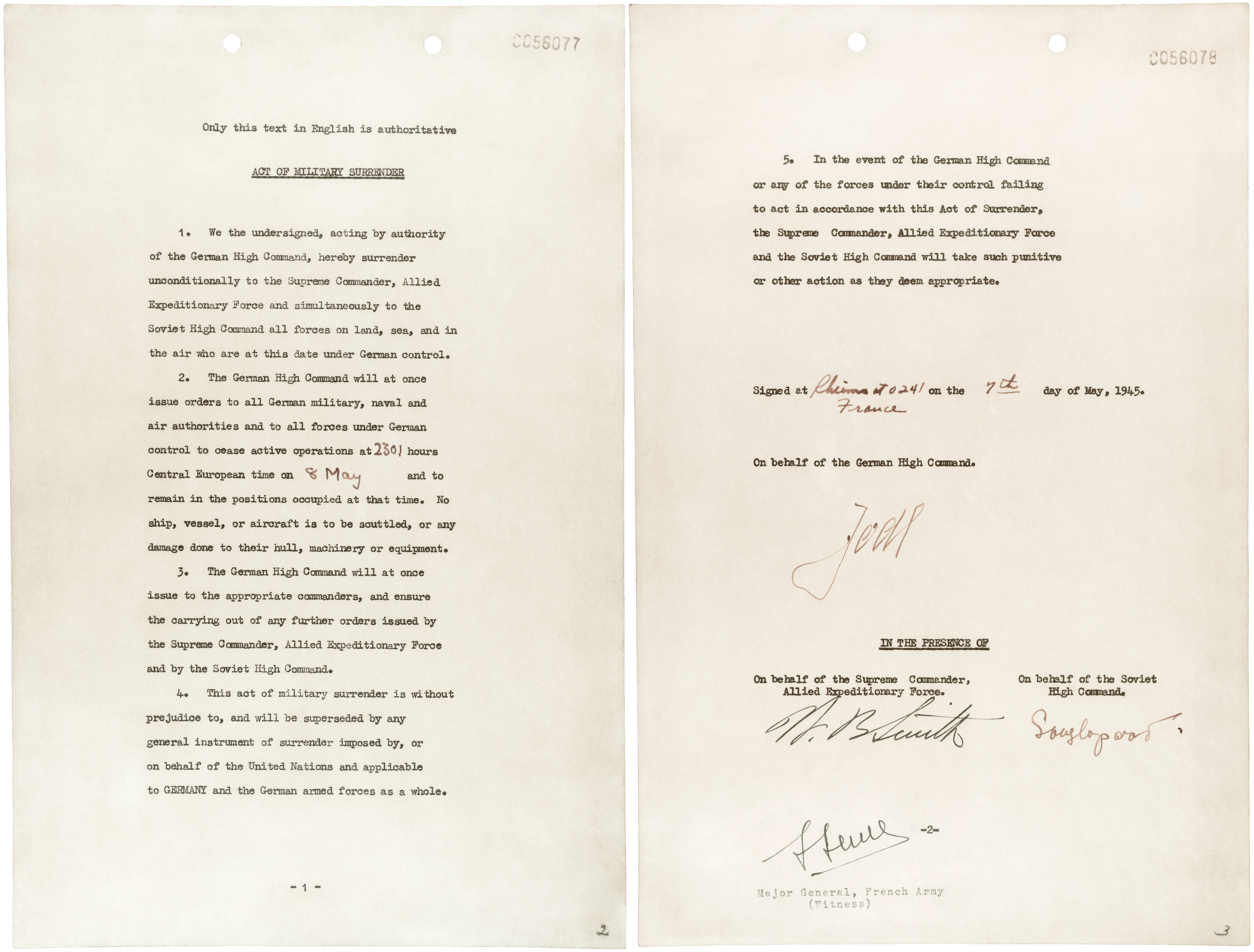
According to Martin Gilbert's book "Winston S. Churchill: Road to Victory, 1941–1945" (RosettaBooks, 2015), Gen. Alfred Jodl signed this Act of Military Surrender on behalf of the Nazi regime; Gen. Walter Bedell Smith represented S.H.A.E.F.; and Maj. Gen. Ivan Susloparov signed on behalf of the Soviet Union.
At the time, Susloparov had not received approval from his superiors, but he ratified the agreement anyway. However, the Soviet authorities in Moscow did not accept the surrender document. Stalin responded angrily to the news of the surrender, asking (in reference to Susloparov): "Who the hell is this famous Russian general? He will be punished harshly," according to journalist and historian Michael Dobbs' book "Six Months in 1945: FDR, Stalin, Churchill, and Truman—From World War to Cold War" (Alfred A. Knopf, 2012).
Related: Translated text reveals life Inside Stalin's labor camps
Stalin demanded changes to the original treaty and insisted that a second ceremony be held in Berlin, with the Soviet Union represented by its foremost commander, Marshal Georgy Zhukov. This second surrender ceremony took place on the night of May 8, 1945 in the Karlshorst district, Berlin. The event was chaired by Zhukov, with Field Marshal Wilhelm Keitel representing German forces and Air Chief Marshal Arthur Tedder standing in for S.H.A.E.F. News of the surrender was announced in Moscow on May 9.
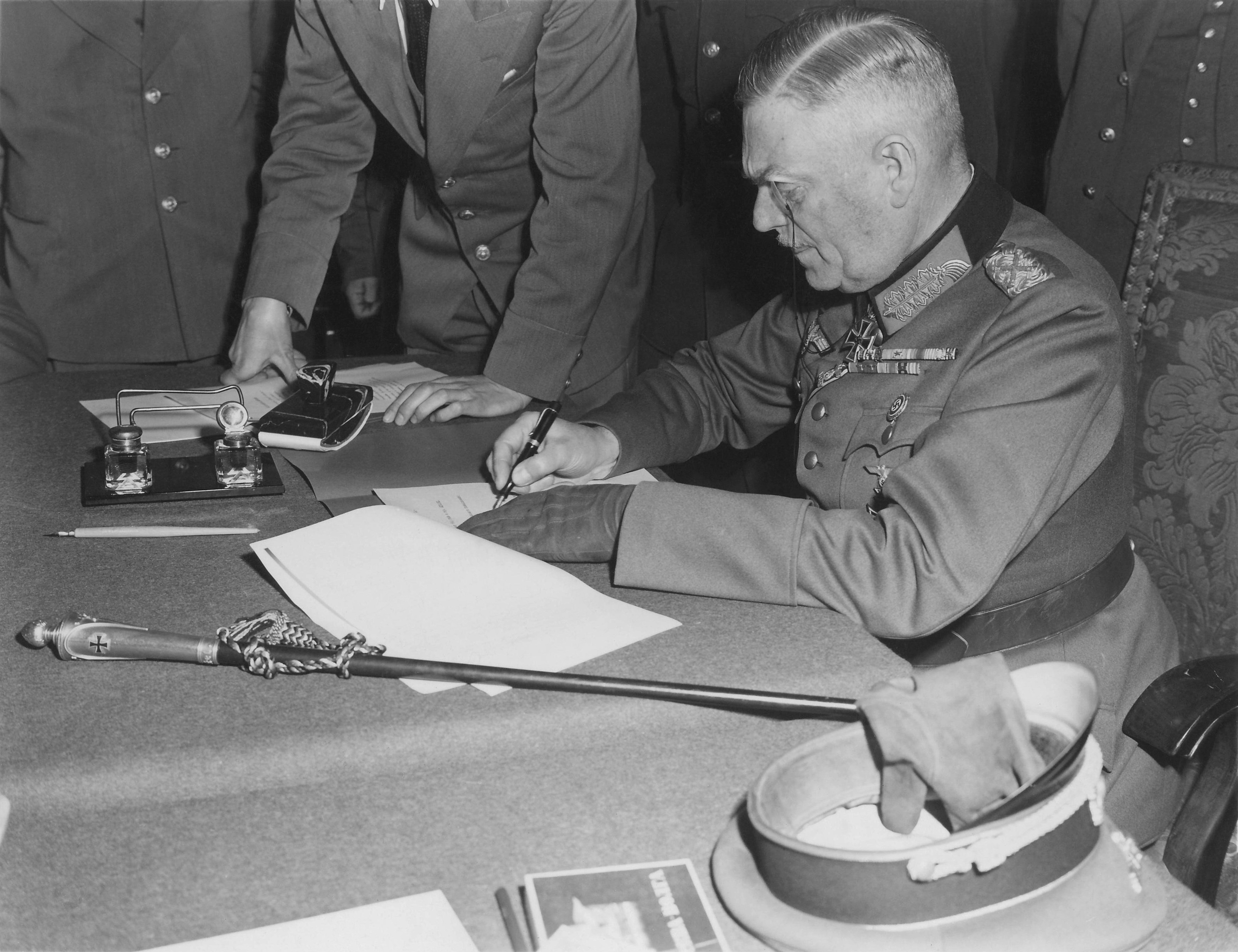
How was VE Day celebrated?
Although S.H.A.E.F. had placed a strict embargo on reports of the surrender, the news was soon leaked and quickly spread around the world. Although this resulted in spontaneous celebration and parties, it was also received with grim reflection on the terrible cost of the war.
By 1945, Britain had struggled through six years of gruelling wartime rations and Nazi bombs, meaning many Brits were keen to relax and celebrate the long-awaited victory. The "Allied Victory had been inevitable for some time. The last few months of the war for British Civilians were exhausting," said historian and World War II expert Peter Caddick-Adams.
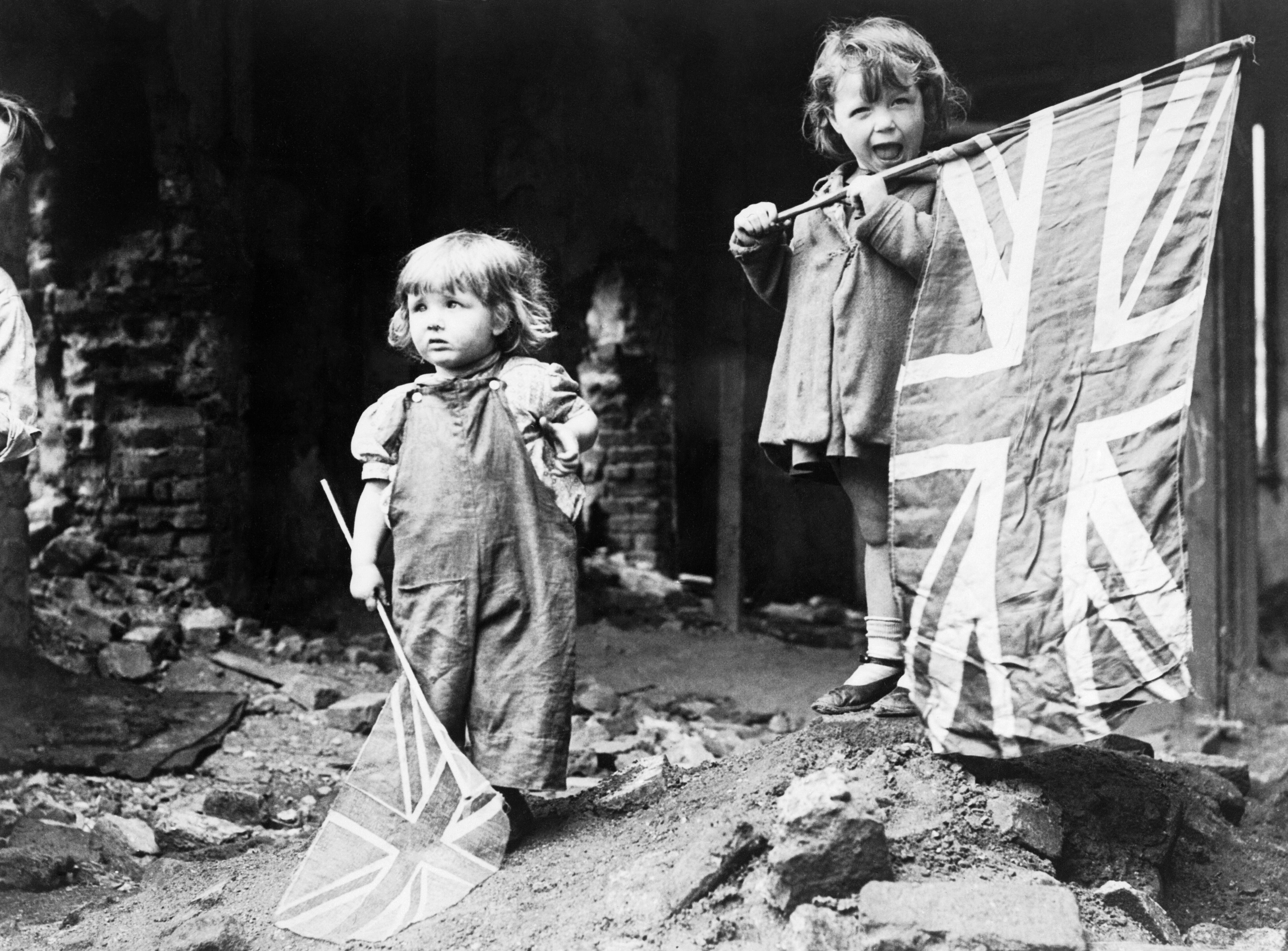
"For the previous nine months, the Germans had been launching V1 and V2 rockets on London and the Southeast with lethal effect," Caddick-Adams told All About History. "Elsewhere, rationing and shortages added to people's woes, and there was a sense of war-fatigue on the one hand and a growing awareness of the horrors that had been perpetrated in Nazi-occupied Europe. With public morale at a low point, it seemed imperative that VE Day should not pass without some sort of national event."
Related: The Flying Bombs of Nazi Germany
In May 1945, the U.S. was still mourning the loss of President Roosevelt, who had died after suffering a stroke less than a month earlier on April 12. As part of the 30-day mourning period, Roosevelt's successor Harry Truman ordered that American flags around the country should remain at half-mast, and he dedicated the first VE Day to Roosevelt. The event also coincided with Truman's 61st birthday — he would later state that the victory made it one of his most enjoyable.
New York City in particular became packed with crowds of people wanting to join in the celebrations. According to the Imperial War Museums, 15,000 police officers were mobilized to one massive gathering in Times Square. Frank S. Adams, reporting for The New York Times wrote that the Times Square crowd numbered around 500,000 people, and celebrated with "the turbulent enthusiasm of New Year's Eve and Election Night rolled into one!"
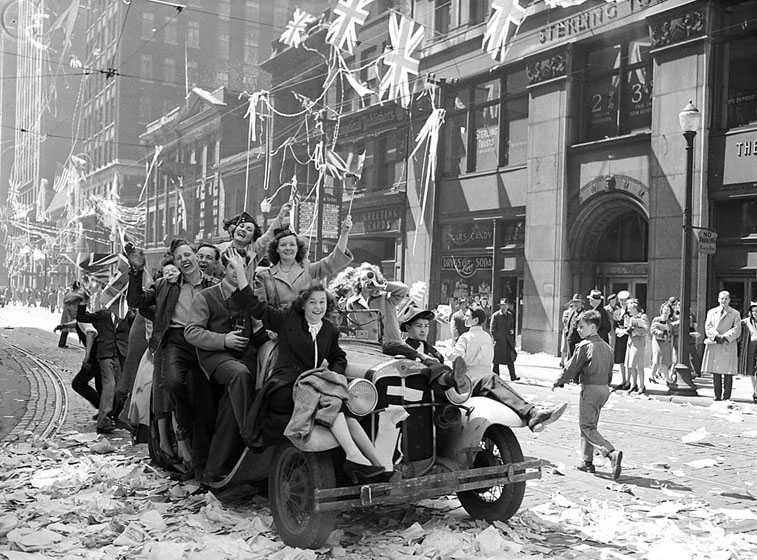
The difference between VE Day and Victory Day
In the Soviet Union, VE Day was instead known as Victory Day. It was first celebrated on May 9, when the second surrender in Berlin was announced. Because of the two-hour time difference between Berlin and Moscow, the surrender took place during the early hours of May 9, though it had commenced on May 8.
Because two separate surrender ceremonies took place, Britain, the U.S. and most of Western Europe continue to mark VE Day on May 8, while the Russian Federation and many nations in Eastern Europe commemorate Victory Day on May 9.
On June 24, 1945, a grand Victory Day Parade was held in Red Square, Moscow, to honor the victory, with Stalin and Zhukov presiding. The spectacle also featured 200 captured Nazi banners, which were "piled up against the wall of the Kremlin," wrote historian Geoffrey Roberts in his book "Stalin's General: The Life of Georgy Zhukov" (Icon Books, 2012). In 1995, another grand parade was held to commemorate the 50th anniversary of the first Victory Day.
Events marking the 75th anniversary of Victory Day in 2020 were delayed due to the COVID-19 outbreak, The Moscow Times reported.
Similarly, official U.K. plans to commemorate the 75th anniversary of VE Day in 2020 were canceled due to the coronavirus outbreak.
To learn more about some of history's most important battles, subscribe to All About History and History of War magazines.
OFFER: Save 45% on 'How It Works' 'All About Space' and 'All About History'!
For a limited time, you can take out a digital subscription to any of our best-selling science magazines for just $2.38 per month, or 45% off the standard price for the first three months.
Sign up for the Live Science daily newsletter now
Get the world’s most fascinating discoveries delivered straight to your inbox.

Callum McKelvie is features editor for All About History Magazine. He has a both a Bachelor and Master's degree in History and Media History from Aberystwyth University. He was previously employed as an Editorial Assistant publishing digital versions of historical documents, working alongside museums and archives such as the British Library. He has also previously volunteered for The Soldiers of Gloucestershire Museum, Gloucester Archives and Gloucester Cathedral.
Scientists built largest brain 'connectome' to date by having a lab mouse watch 'The Matrix' and 'Star Wars'
Archaeologists may have discovered the birthplace of Alexander the Great's grandmother
Elusive neutrinos' mass just got halved — and it could mean physicists are close to solving a major cosmic mystery












